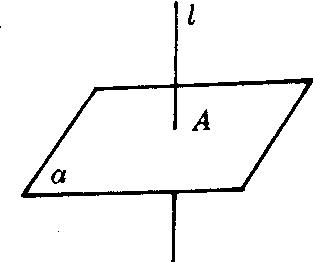直线和平面互相垂直zhixian hepingmian huxiang chuizhi
若一条直线和一个平面内的任何一条直线都垂直,我们就说这条直线和这个平面互相垂直.这条直线叫做平面的垂线,这个平面叫做直线的垂面.平面的垂线和平面一定相交,交点叫做垂足(如图).

直线l和平面a互相垂直,记作l⊥a.
| 词条 | 直线和平面互相垂直 |
| 类别 | 中文百科知识 |
| 释义 | 直线和平面互相垂直zhixian hepingmian huxiang chuizhi若一条直线和一个平面内的任何一条直线都垂直,我们就说这条直线和这个平面互相垂直.这条直线叫做平面的垂线,这个平面叫做直线的垂面.平面的垂线和平面一定相交,交点叫做垂足(如图).
直线l和平面a互相垂直,记作l⊥a. |
| 随便看 |
开放百科全书收录579518条英语、德语、日语等多语种百科知识,基本涵盖了大多数领域的百科知识,是一部内容自由、开放的电子版国际百科全书。